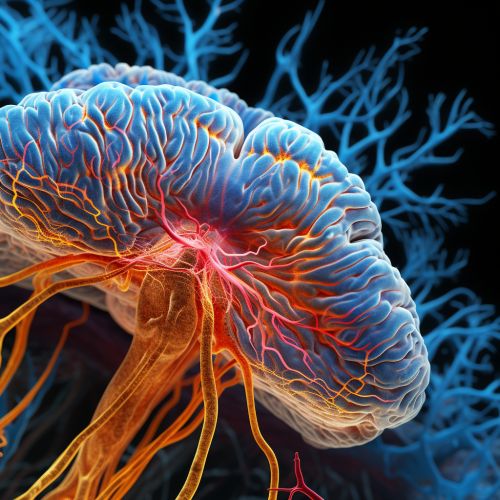Olfactory Cortex
Anatomy
The olfactory cortex is part of the cerebral cortex that is involved in the processing of olfactory information. It is located in the rostral (front) part of the brain, which is involved in the sense of smell. The olfactory cortex includes several areas such as the piriform cortex, the entorhinal cortex, the olfactory tubercle, the periamygdaloid cortex, and the anterior olfactory nucleus.


Function
The primary function of the olfactory cortex is to receive and process olfactory information, which is information related to smells. The olfactory cortex receives direct inputs from the olfactory bulb, which is unique among the senses. Most other sensory systems, such as the visual and auditory systems, relay their information through the thalamus before it reaches the cortex. The olfactory system, however, bypasses the thalamus and sends information directly to the cortex. This direct pathway allows for the rapid processing of olfactory information.
Clinical Significance
Damage to the olfactory cortex can result in a variety of olfactory disorders, including anosmia (loss of the sense of smell), hyposmia (reduced ability to smell), and dysosmia (distorted perception of smells). In addition, because the olfactory cortex is closely connected with the limbic system, which is involved in emotion and memory, damage to the olfactory cortex can also affect these cognitive functions.
Research and Future Directions
Research on the olfactory cortex has provided insights into the neural mechanisms underlying the sense of smell. For example, studies have shown that the olfactory cortex is involved in the discrimination and identification of different odors. Future research on the olfactory cortex may lead to new treatments for olfactory disorders and may also provide insights into other aspects of cognition, such as memory and emotion, that are influenced by olfactory processing.
